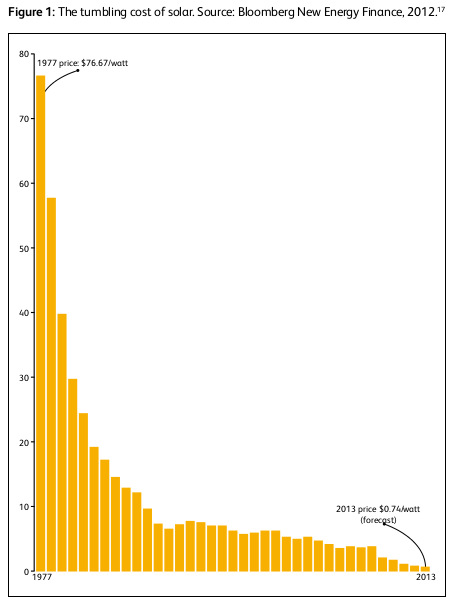Fight the Npower: Why we’re going to Didcot
On 29th May 2015, Reclaim the Power will hold a family-friendly action camp near Didcot power station. This is our immediate response to a government that’s in bed with the fossil fuel industry. For four years, communities all over the UK have managed to hold off fracking, which threatens our air, water, health and the countryside, as well as furthering climate change with its devastating effects for people everywhere. Now it will take similar determination from all of us to prevent this government from renewing its push for extreme energy, austerity and more corporate welfare.
The government will think they now have free rein to subsidize their friends and relations in the fracking industry and commit to another round of gas-fired power stations. They plan to build infrastructure that will lock us into burning carbon for years to come while killing off renewable technology. Parliament is stacked. It is people on the ground who, by our multiple actions, can stop them in their tracks.
But why set up an action camp near Didcot power station? Here we take a look at some reasons.
1. Because Gas is still dirty and pushing us into fuel poverty
Didcot B is a gas fired power station built in in 1997. Whilst gas generation is often touted as cleaner than coal, it’s still a fossil fuel that we can’t afford to burn if we’re to have any chance of avoiding runaway climate change.
Against the advice of the government’s own Committee on Climate Change, Chancellor George Osborne has approved the construction of up to 30 new gas-fired power stations such as the recently completed stations at West Burton in Nottinghamshire and Carrington in Salford. The government intends to go “all out” for shale gas – with up to two thirds of the UK licensed for fracking. Whether extracting it or burning it, this is the new dash for gas that must be resisted.
Relying on gas to generate electricity isn’t a cheap way to power our homes. As the Confederation of British Industry explained, “Even if you forgot about carbon momentarily, look at European gas price projections. They all disagree on the number, but they all agree on the direction – up.” The UK suffers some of the worst levels of fuel poverty in Western Europe with thousands forced to choose between heating and eating each winter. More fossil fuels might help Npower make £766 million in profit in three years (whilst paying no corporation tax) but meanwhile 10,000 people die each year from cold-related illnesses.
Didcot is at a cross roads. The old coal station (Didcot A) and iconic cooling towers have been part-demolished. By December this year, Npower must decide whether Didcot B station will continue indefinitely (via the Transitional National Plan) or be phased out and closed by 2023 (via the Limited Life Derogation scheme).
2. Because Npower have been lobbying to weaken our emissions controls
RWE Npower, who own Didcot, are one of the ‘Big Six’ energy companies that have been a key lobbyist both in the UK and Europe in undermining our efforts to tackle climate change whilst protecting their profits. As we look ahead to the COP21 climate talks in Paris this December, the dominating position of big business – where industry regulates itself with governments and civil servants dancing to their tune, will continue to play a key role in the negotiations – and must be confronted.
In Germany, the business models of their ‘Big Four’ energy companies, including RWE, have been seriously undermined by more and more people choosing wind, sun and water power instead of the fossil fuels to which these companies are committed. Fearful that the UK might replicate Germany’s energy transition; UK utilities have lobbied for a ‘Capacity Market’ to be introduced in the recent Energy Act (2013) instead. This uses public subsidy to build new fossil fuel generation (mainly gas) to provide generating capacity against intermittent renewable energy. In effect, energy companies receive public money to build gas-fired stations and will be paid even if those stations are not used. The ‘expert group’ that drew up the design for the Capacity Market comprised mostly of members of the Big Six – representatives from RWE (Npower), Centrica, SSE, Scottish Power plus Drax. [1]
Furthermore, this “safety net” would not be necessary if so much of our energy was not being wasted. One third of the heat in UK homes escapes through uninsulated roofs and walls. When Drax power station was built in Yorkshire it was calculated that the money spent on building it could have insulated the whole of East Anglia – and made all the power that Drax produces unnecessary. But instead of insulation to provide warm homes and bring bills down, more money is being invested in subsidizing gas and other carbon-heavy fuels.
At the European Union, Npower are protecting their profits in the committees responsible for implementing the Industrial Emissions Directive, which aims to reduce air pollution from industrial sources. Not only do the Big Six have their industry seats on these committees, they also represent the UK government at the same time. Take the ‘Technical Working Group’ – an important committee on regulating emissions from old coal plants. Out of 352 seats in total, there are already 137 seats set aside for industry voices on this group (39%), with 172 seats (49%) reserved for EU member state delegations. Of the nine delegates representing the UK government, five are from large polluters including RWE, EDF, E.ON and Stanlow oil refinery. [2] In total, 183 seats (52%) are taken up by companies that are being regulated, or by lobby groups that represent those companies. The corporate capture of these processes has resulted in member states arguing for weaker regulations on energy efficiency, sulphur dioxide, nitrous oxide and mercury emissions.
 3. Because the Big Six are trying to block the transition to renewable energy
3. Because the Big Six are trying to block the transition to renewable energy
The business models of the major energy companies relies on centralised, inefficient fossil fuel energy generation. But rising around these lumbering dinosaurs, community-led renewable energy solutions are mounting a fundamental threat to their power and their profits.
Renewable energy in the UK, especially wind and solar are being deployed at far greater rates than was expected 5 – 10 years ago. This is partly a response from public pressure for government to invest in renewables (such as the Feed-In-Tariff) but also partly because prices have plummeted. Solar for example, is now 99% cheaper than in the late 1970s. Whilst it costs quite a lot to make and install the equipment (wind turbines, solar panels, etc), once they are up and running there are no ongoing fuel costs. The wind and sun come for free – unlike expensive gas supplies. If communities begin to generate this electricity for themselves, there is less need to buy expensive, fossil fuel electricity from the Big Six.
In Germany, 50% of renewables are owned by individuals, farmers and communities. On one sunny day on May 2014, nearly 75% of the country’s electricity was generated by renewables. And every day, German energy prices are lower because of this transition to renewables – even though that transition is incomplete. Some of the Big Four in Germany have seen the writing on the wall and begun diversifying that energy portfolios. The Big Six in the UK are fearful of the same thing happening in the UK – hence lobbying for a Capacity Market with new gas generation.
It’s not just Germany. In the first quarter of 2013 Portugal generated two thirds of its energy from renewables; in Spain it was one third. [3] Solar panels can be seen on ordinary rooftops all over China. Even in the USA the fossil fuel industry is panicking as renewables disrupt their profits and challenge the status quo. In Germany some of the Big Four have seen the writing on the wall and begun diversifying that energy portfolios, and are trying to break into the renewables market while “mothballing” old fossil fuel plant. The Big Six in the UK have been fearful of the same thing happening in the UK – and in fact, two thirds of planned European solar projects for 2014-15 are in the UK.[2] But they hope that, with the government in their pockets, they’ll be able to frack, build new gas-fired power stations, kill off renewable energy, continue burning gas, coal, and oil, and keep tax money pouring into their profits via “capacity” payments and other subsidies.
In Germany some of the Big Four have seen the writing on the wall and begun diversifying that energy portfolios, and are trying to break into the renewables market while “mothballing” old fossil fuel plant. The Big Six in the UK have been fearful of the same thing happening in the UK – and in fact, two thirds of planned European solar projects for 2014-15 are in the UK.[2] But they hope that, with the government in their pockets, they’ll be able to frack, build new gas-fired power stations, kill off renewable energy, continue burning gas, coal, and oil, and keep tax money pouring into their profits via “capacity” payments and other subsidies.
When Didcot B gas power station caught fire last October, the lights didn’t go out. It was renewable energy that picked up the slack. Whether extracting it or burning it, there’s no future for a new dash for gas. The tide of change is something that no government, and no industry, will be able to hold back. The fossil fuel industry, which does so much to destroy both the climate and our standards of living, is ultimately doomed. The question is, how many of us will it drag down with it as they try to protect their investments? The answer is up to us.
Join us for an international weekend of action near Npower’s Didcot power station on 29th May to get skilled up, join together and take action for a future worth fighting for.
References
[1] The Big Six on the Run – How renewables are disrupting big energy firms everywhere
[2] Smoke and Mirrors – How Europe’s biggest polluters became their own regulators (pg 28)

